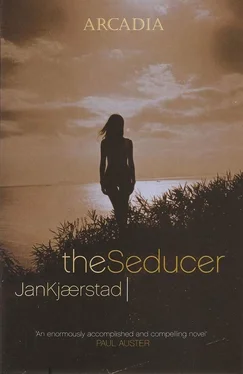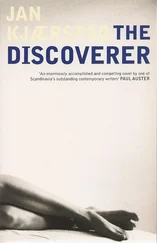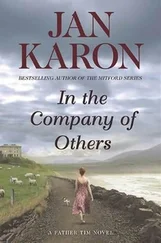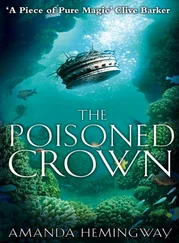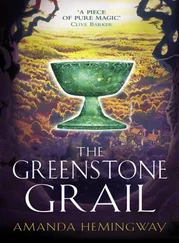Aunt Laura’s secret beau idéal was Ibn Battuta, one of the greatest nomadic spirits of all time, born in Tangier at the beginning of the fourteenth century. Her eyes lit up when she mentioned Ibn Battuta’s name so that to begin with Jonas thought he must be an old and particularly fierce-burning flame. Tucked away like a treasure in an exquisitely carved chest, his aunt kept the French four-volume edition of Ibn Battuta’s Rihlah , and every now and again, usually when she was in a good mood, she would take out one of the volumes and leaf through it, stopping here and there, her blood-red lips curving into a smile, as if at some sudden recollection, before she laid the book back in the chest. Afterwards she would recite fragments from it to Jonas so that eventually he was able to reconstruct the whole story of Ibn Battuta’s overwhelming urge to travel, a passion he believed that God himself had instilled in him. Indeed, he had set himself the goal of visiting all of the world’s most renowned mosques, and because Ibn Battuta followed the rule never to take the same road twice, his travels led him to every part of the known world of the Middle Ages, from West Africa to China — Jonas particularly enjoyed hearing the different names for all the cities: al-Iskandariya for Alexandria, Misr for Cairo, Bait al-Muqaddas for Jerusalem. And wherever he went, through the secretary to whom he dictated the story of his travels, Ibn Battuta recounted little tales and anecdotes about people and places, from historical facts to where they grew the best melons and apricots, either that or he would quote homages made by poets to certain spots, or describe a rhinoceros for the benefit of his contemporaries. But first and last Ibn Battuta described all of the mosques, as, for example, when he devoted ten pages to the Umayyad mosque in Damascus with its three slender minarets, hailing it as one of the most beautiful buildings in the world.
Aunt Laura, too, had a particular penchant for mosques on account, as she put it, of their perfect balance between the masculine and the feminine, the minarets and the dome. She could sit for hours, telling Jonas how the small towns looked from a distance, the line of their rooftops against the sky, bows and lances, ‘or, if you like,’ she would say, ‘phalluses and breasts in perfect harmony as if in defiance of the suppressed sexuality of Muslim society.’
The truth of it is, however, that Jonas’s aunt went travelling to see minarets of quite another order, sacred objects of a much more down-to-earth sort. Not to beat about the bush: she travelled abroad to see all the penises in the world. And as time went on she made no secret of it either. If there was one thing Jonas liked about Aunt Laura it was that she said things straight out, quite unabashed, unlike other adults. And like Ibn Battuta she had also kept a record of her travels in the form of a bundle of highly unusual sketchbooks.
On one occasion, Aunt Laura drew the erect penis of a man lying on his back, viewed from the side, and showed Jonas how much it had in common with a mosque: the scrotum as the soft, rounded dome and the shaft itself as a proud minaret. So in fact it was here, in a flat in Tøyen, on the east side of Oslo, surrounded by Oriental rugs and precious metals, that Jonas first learned that he had a sacred object between his legs. And this might well explain — it’s just a thought, mind you — why a polar bear would one day back away from Jonas Wergeland’s genitals: out of respect for the divine.
One evening, when Aunt Laura had finished soldering the join on a cylinder of silver that she had bent into a circle, with the faint smell of gas still lingering in the room, she told Jonas about Ibn Battuta’s description of the Ali ibn Abi Talib mosque in the town of Al-Basra, which had seven minarets, one of which trembled when the name of Ali ibn Abi Talib was spoken out loud. Ibn Battuta had tried this for himself and seen how the minaret shook. Aunt Laura turned her white face to look at Jonas as if weighing up whether he was mature enough to hear the truth. Then she said, ‘In the same way you can make a cock tremble by whispering certain words.’ And Jonas realized that, like Ibn Battuta, she must have put this to the test.
In connection with his visit to Mecca, his aunt went on, Ibn Battuta had described the Black Stone and how kissing this ‘affords a pleasure that is especially good for the mouth’. Ibn Battuta regarded the stone as God’s hand on Earth, which meant that kissing it was actually synonymous with touching the hand of God. Again Jonas’s aunt scrutinized him from under inky eyelids, to see whether he could cope with what came next: namely, that she had found the same to be true of penises, that they were like antennae of a sort, tuned in to the celestial. ‘Some kiss the Black Stone in the Kaaba, others kiss stones in kaabas of another sort,’ she said.
To be absolutely frank, so passionately obsessed was Aunt Laura with the male organ that rugs were not all she collected on her long and arduous journeys; she collected penises too. That is to say, she drew them. Jonas’s aunt had sketchbooks full of penises, all shapes and sizes. If, prior to this, Jonas had imagined that a cock was just a cock, much as a layman cannot tell the difference between Oriental rugs, then his misconceptions on this score were put straight with a vengeance at Aunt Laura’s. ‘Just as with the goldsmith’s craft, it all comes down to the tools,’ she said.
It was at such times that his aunt would pour more tea and bring in a brass salver of fruit on which a banana might be lying, graphically arranged between two plums, before she sat down next to Jonas on the sofa and showed him her sketchbooks, or travel journals as she called them, from every corner of the globe; turning their pages with fingers adorned with rings the like of which Jonas had never seen: spirals and little facets that gleamed and flashed among the drawings of all the penises she had come across in different societies. Later in life, Jonas would wonder whether his aunt might have had some deeper purpose with all of this. While in olden days there were people, phrenologists, who believed that they could tell something about a person’s temperament by measuring the skull, Aunt Laura’s study of the penis’s countless physiognomic aspects may have sprung from a theory that this said everything about what these men were like as people: how intelligent they were, for example.
However that may be, as his aunt leafed through her journals, with her bracelets jingling, Jonas beheld penises of every length and thickness, pointed and stubby, and in their various states: limp, erect and ejaculating. There were also sketches of individual details, as if each part of the organ were deserving of a study in itself: the pubic hair, for example. When it came to the foreskin, Jonas was particularly intrigued by certain peoples who, according to his aunt, arranged the skin in folds like a sort of drapery — in direct contrast, in other words, to all those men who were circumcised. In one sketch of the glans his aunt had depicted it as a helmet, in others as the wing cases of a beetle and as a scarab. Or it might be the scrotum, covered in a labyrinthine pattern of wrinkles, which made it look like a piece of coral or a brain. On some pages his aunt had executed detailed studies of the furrow that divides the scrotum in two; on others she had captured the head of the penis from in front, like a Cyclops. Jonas also came across some sketches of ejaculating penises which resembled nothing so much as rough drawings for fountains.
But the majority of the sketches depicted what in good Anglo-Saxon is called a ‘hard-on’, as if this posed the truly creative challenge. Aunt Laura was especially interested in the comparisons which a hard-on invited. Some resembled horses’ heads, the neck and the head, or the whole of a horse’s forebody, others were like dolphins and snakes. ‘I ran into this one in Brazil,’ said Aunt Laura, pointing to one which, owing to the pronounced ruff around the glans, had the look of a Triceratops dinosaur about it. Jonas saw other penises reminiscent of asparagus, tulips, various sorts of mushroom and a sprouting onion. Or shaped like large loaves. Or bones, clubs and flagpoles. There were even some flutes and bejewelled sceptres. Some were streamlined as rockets. In other cases his aunt had given her imagination free rein and drawn penises as telescopes, lighthouses, antlers, curling trunks or as the top of a champagne bottle, complete with cork. Some of the drawings had been coloured, with the result that in one instance the penis looked like a large, glossy purple aubergine, in another a pillar of ivory etched with fine blue lines and one last as an old tree trunk, gnarled and twisted.
Читать дальше
